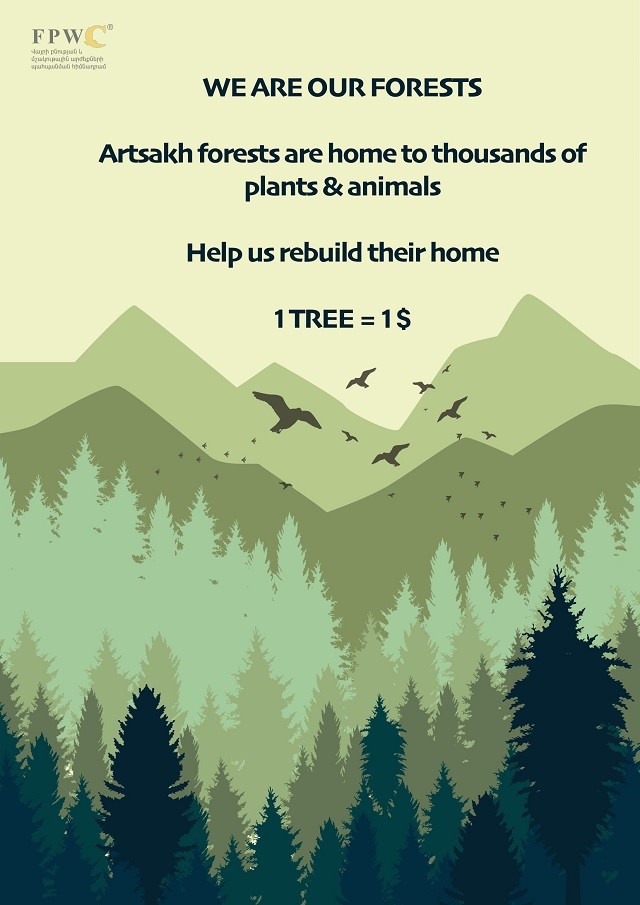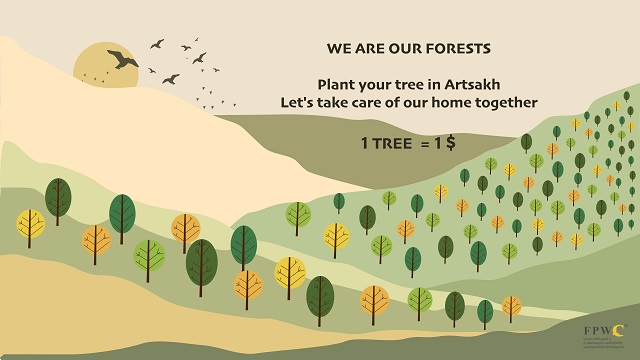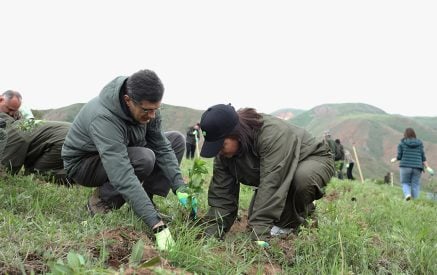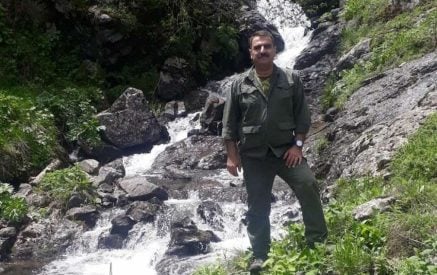Raising $50,000 to plant 50 000 trees in Artsakh
Website for donation: https://www.fpwc.org/donate/
The Foundation for the Preservation of Wildlife and Cultural Assets launched its We are our Forests campaign as part of its Aid for Artsakh project, in order to provide emergency relief to the forests and ecosystems of Artsakh. By raising $50,000, the FPWC will be able to plant 50 000 site-specific trees as part of its mission to protect and conserve the biodiversity of the region.
Trees will be grown in a tree nursery owned by FPWC with a Target Plant Concept(TPC) methodology. The TPC is an effective framework for selecting seedlings based on specific characteristics best-suited to a given site. These characteristics are often scientifically derived from testing the factors that can be linked to outplanting success, such as seedling morphology and physiology, genetic source, and overcoming limiting factors on outplanting sites. The method allows to have very high survival rates (80-90%).
Read also
The growing cycle will begin in March, 2021. By October, 2021 plants will be ready for the outplanting. The planting season starts from mid-October to late November. The days can vary based on weather conditions. It’s also possible to maintain some part of the trees during winter and plant during March and early April neat year.
Maintenance of planted trees and survival rate tracking
FPWC will cooperate with the Artsakh Nature Fund, the first environmental CSO in Artsakh to provide the further care and track survival rates of planted trees. Artsak Nature Fund was established to conserve and sustain the unique natural heritage and biodiversity of Artsakh. It is the first organization to receive an international funding from Fondation Franklinia, a Geneva based organization, which recognized Artsakh and supported the initiative towards conservation of its unique forests in Y2019.
FPWC and ANF will maintain and monitor the growth of trees 5 years after planting. This includes irrigation during summer months, patrolling by rangers to prevent unregulated grazing, remove and prevent weeds around the plants, etc. During these years the tree species will grow and develop a strong root system to grow independently. Though the main maintenance will last two years, we will continue monitoring and patrolling the reforested areas during at least another 5 years, to make sure no negative human impact is recorded on the site.
Rangers will patrol the planted areas and monitor the survival rates. This is a huge benefit for the project, as we have a constant supervision of planted trees, which help us to respond quickly to any disruption of normal growth.
An evidence-based approach will be used by applying data gathering with GPS coordinates. Planted trees will be divided into blocks and recorded with the GPS coordinates, type of species, etc. The survey team will locate each tree block and record its measurements along with survival rates during the year. This will give us a better understanding of survival rates, as well as get access to real-time data, so if there is any sort of mistake or issue that disrupts the normal growth of trees, we can prevent and take actions before it’s late.
Background information
On September 27th, 2020, Azerbaijan launched a robust military offensive on the Republic of Artsakh. During the course of the war that ensued, Azerbaijan caused terrible human losses and disastrous damage to civilian infrastructures by bombing cities and villages, destroying schools, hospitals and churches. Intense destruction was also caused to Artsakh’s forests, where the illegal use of white phosphorous munitions had devastating effects on the environment and on the biodiversity of the region. These have given rise to concerns of an ecocide in the South Caucasus.
The region of Artsakh is a biodiversity hotspot. Its primary forests are home to over 6000 plant species, 153 species of mammals and 400 species of birds. Of these, hundreds are currently listed on the International Union for Conservation of Nature’s Red List of Threatened Species. Indeed, the destruction of forest caused by this war has threatened the very existence of countless species, including the brown bear, the bezoar goat, the mouflon, the lynx, the vulture, the eagle and the Caucasian leopard, a critically endangered feline at a high risk of extinction.
Artsakh’s forests play an important role in the preservation of favourable environmental conditions for sustainable development, but they are also essential for the local people who depend heavily upon it for their livelihood. In fact, the indigenous people of Artsakh have accumulated and passed down traditional forest-related knowledge for thousands of years, and their social and cultural practises, as well as their economy, are deeply rooted in this environment, and dependent on its wellbeing for their survival. As a direct result of the illegal use by Azerbaijan of white phosphorus munitions, hundreds of hectares of forest have burned, habitats have been destroyed, ecosystems have been ravaged, and the soil and bodies of water of the region have been contaminated. This represents a major threat for humans and all living creatures of the wider region of the South Caucasus; the consequences of this destruction can be devastating for decades and centuries to come.
After the war of 2020, due to the loss of areas, there is a new challenge for Artsakh population – the shortage of water, as most of the water resources are now under Azerbaijani control. Naturally, forests serve as our natural water collection, storage, filtration, and delivery systems by collecting rain and snow and delivering it into streams, wet meadows, and aquifers throughout the year.
Foundation for the Preservation of Wildlife and Cultural Assets




























































